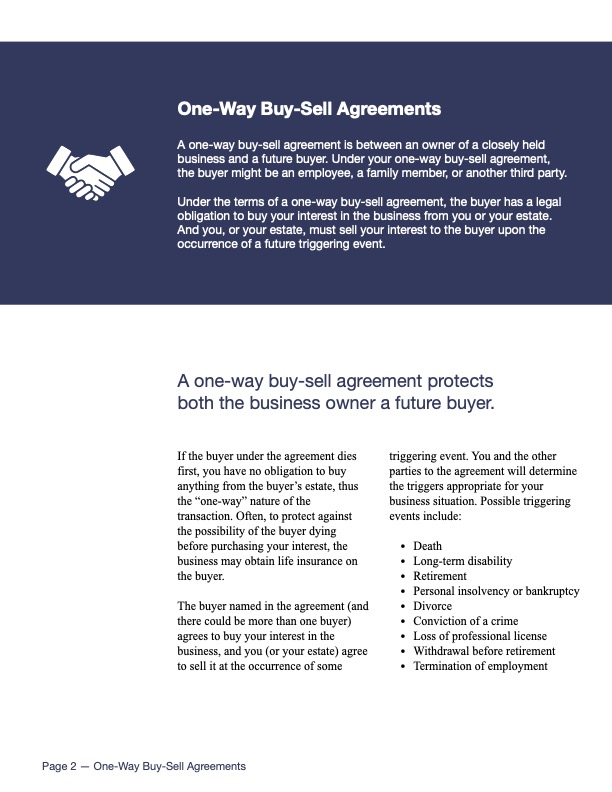Planning for the continuity of a business upon an owner’s retirement, illness, or death is important but often neglected. Planning early—and periodically revisiting the plan—are essential.
Creating a plan for transitioning a family owned business is critical but frequently overlooked.
While 85 percent of family business owners say they would like to transition their companies to the next generation, fewer than half will do so. Indeed, only 30 percent of family businesses survive into the second generation, and just 12 percent remain viable into a third generation or beyond.
The lack of succession planning is a leading cause of family business failures. Most owners neglect to provide for the continuity of their businesses upon their retirement, illness, or death.
Steps for creating a succession plan include:
- Identifying a successor
- Developing an appropriate transition strategy
- Establishing a timetable
- Accounting for retirement
- Executing the succession plan
Options in succession planning include:
- Selling to other owners
- Selling to key employees
- Selling to third parties
- Selling to family members
- Gifting the business to a family member before or after death
- Establishing Deferred Compensation Agreements
- Executing Buy-Sell Agreements
- Implementing life and disability-based funding mechanisms for retirement, disability, and employee-retention efforts
Baker Law is here to help design, implement, monitor, and regularly review a business transition plan that’s right for you.
Helpful Resources


One-Way Buy-Sell Agreements
A one-way buy-sell agreement between an owner of a closely held business and a future buyer protects both parties.

